
Spread across the heart of Manipur like a vast sheet of silver, Loktak Lake is a spectacle of nature unlike any other in the world. Its surface is dotted with floating islands, called phumdis, that drift gently over the water, creating a landscape that looks almost surreal. As the early morning mist lifts, fishermen in their traditional boats glide silently across the lake, their silhouettes framed by the golden hue of sunrise. The gentle lapping of water, the soft call of waterbirds, and the wide-open horizon make it a place where serenity feels infinite.
Beyond its ethereal beauty, Loktak Lake is the lifeline of the region—supporting villages, wildlife, and culture. It is home to Keibul Lamjao National Park, the world’s only floating national park and the last refuge of the endangered Sangai deer. The lake’s ecosystem teems with birdlife, making it a paradise for nature lovers and birdwatchers. Travelers often take boat rides to explore the floating islands, witness the unique lifestyle of locals living on phumdis, and immerse themselves in the simple charm of lakeside life.
As the day draws to a close, Loktak transforms once again. The still waters turn into a golden mirror reflecting the fiery shades of the sunset, and the entire lake seems to pause in reverence to the fading light. Whether you’re here for quiet contemplation, photography, or cultural exploration, Loktak Lake offers an experience that lingers in memory long after you’ve left its shores.
Best time to visit: November to March
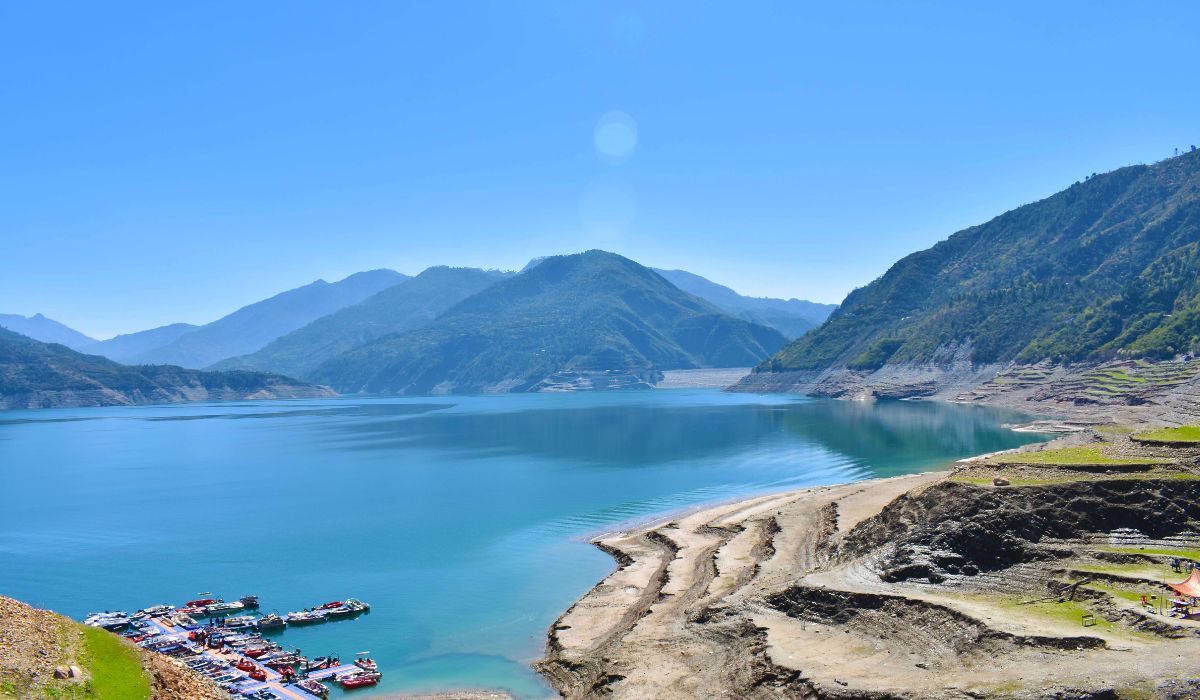
Tucked away in the tranquil embrace of Manipur’s Kangchup Hills, Singda Dam is more than just an engineering marvel—it’s a sanctuary where nature unfolds in its purest form. The shimmering waters glisten like a giant mirror, perfectly reflecting the surrounding emerald hills and the vast blue sky above. The air here feels fresher, carrying the scent of pine and wildflowers, and the gentle ripples of the dam’s surface create a rhythm that soothes the soul instantly.
The charm of Singda Dam extends beyond its breathtaking beauty. Winding trails lead through lush forested slopes, each turn opening up to views that look straight out of a dream. By the water’s edge, families gather for picnics, couples sit in quiet conversations, and photographers capture the interplay of light and shadow across the landscape. For the more adventurous traveler, the hills nearby offer scenic trekking routes with panoramic vistas at every bend.
As evening approaches, the magic deepens. The setting sun bathes the dam in a golden glow, turning the calm waters into liquid amber. Local villagers often stroll along the banks, offering warm smiles and stories to curious visitors, adding a touch of cultural richness to the experience. It’s the kind of place where time feels slower, the world feels softer, and you can’t help but wish to stay just a little longer.
Best time to visit: October to March

In the heart of Imphal lies Kangla Fort, a place where history, legend, and culture intertwine to form the soul of Manipur. Once the royal seat of the Meitei rulers, this sprawling complex echoes with stories of valor, tradition, and centuries-old heritage. Walking through its grand entrance, you’re met with ancient brick walls, sacred shrines, and open courtyards that seem to breathe the past into the present. The soft rustle of leaves and the distant ringing of temple bells create a serene atmosphere that feels almost timeless.
Kangla Fort is more than a monument—it is a cultural landmark that holds deep significance for the people of Manipur. Within its grounds stand important sites like the Kangla Sha, the mythical dragon-lion statues guarding the fort, and ancient temples dedicated to traditional deities. The fort’s museum offers a glimpse into the region’s royal history, showcasing artifacts, manuscripts, and relics that narrate the story of a proud kingdom. Every step through these pathways feels like a walk through the pages of history.
Yet Kangla Fort is not frozen in time—it continues to be a vibrant space for cultural events, festivals, and quiet reflection. Locals and visitors alike come here to stroll along its shaded walkways, soak in the heritage, and feel the quiet strength of this historic stronghold. As the evening light casts golden hues on the old walls, you can almost imagine the grandeur of the days when kings ruled from within these gates.
Best time to visit: October to March
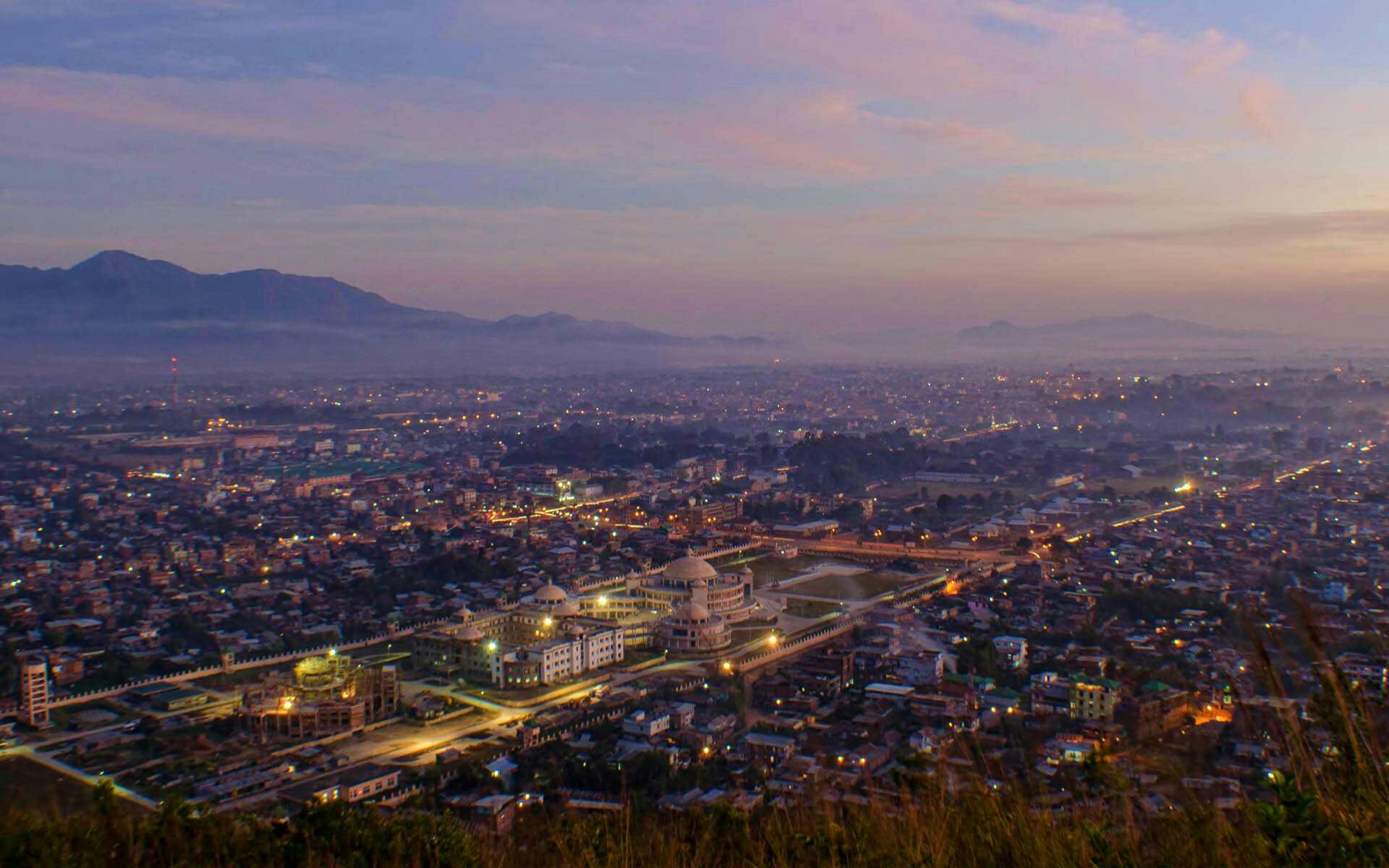
Encircled by gently rolling hills, Imphal Valley unfolds like a lush green tapestry at the heart of Manipur. From above, it appears as a vast, fertile plain, its patchwork of rice fields glistening under the sun and waterways weaving silver threads across the landscape. The valley’s beauty lies in its openness—where the horizon stretches far and wide, and the sky feels endlessly close. As dawn breaks, soft mist clings to the fields, and the air carries the earthy scent of fresh crops, creating a scene that feels like nature’s own painting.
Life in Imphal Valley is deeply intertwined with its fertile land and rich cultural traditions. Villages scattered across the plains are alive with the rhythms of agriculture, age-old festivals, and warm community bonds. The valley is also home to Imphal city, a vibrant hub where history, tradition, and modern life meet seamlessly. Bustling markets like the all-women-run Ima Keithel add splashes of color and life, while surrounding lakes, gardens, and heritage sites invite exploration beyond the city streets.
Imphal Valley is more than just a geographical feature—it is the beating heart of Manipur. Whether you come to immerse yourself in the cultural festivals, cycle through quiet rural roads, or simply sit and watch the sun set behind the enclosing hills, the valley offers a sense of peace and connection that is rare to find. Its changing moods—from the fresh green of monsoon to the golden harvest hues—make every visit feel new and special.
Best time to visit: October to March
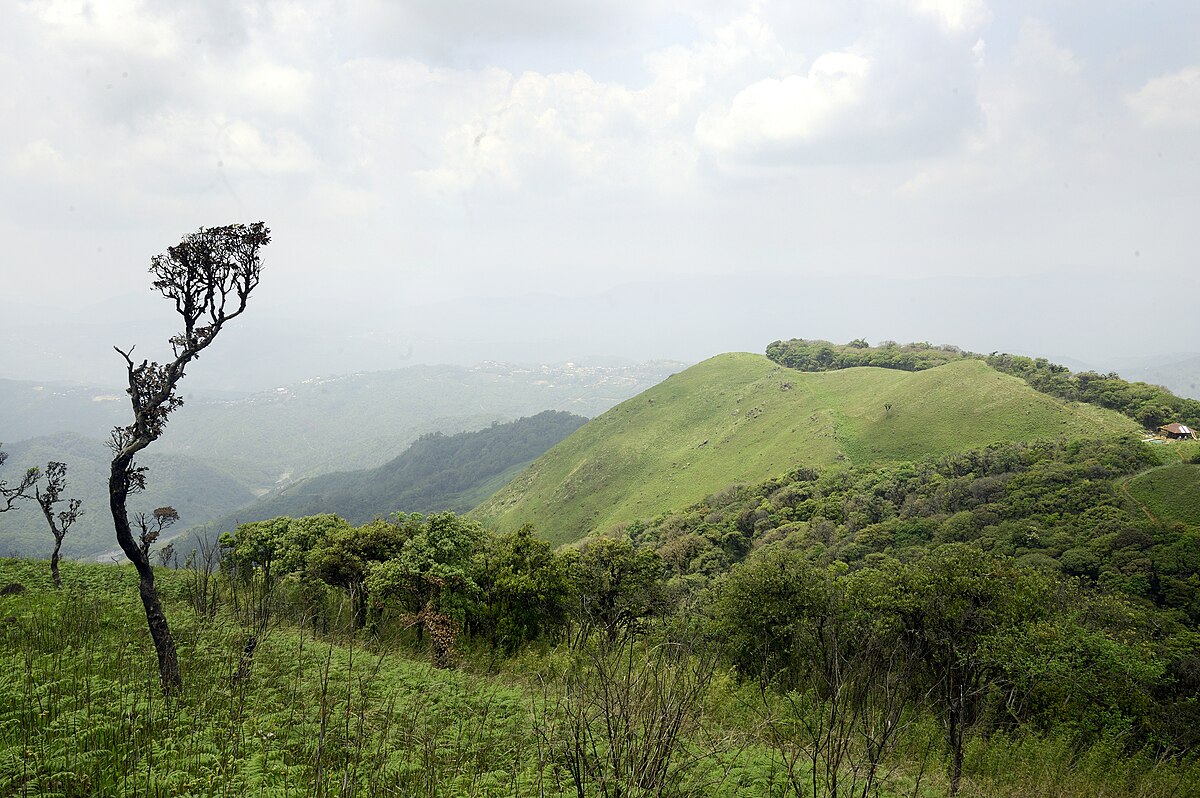
High above the clouds in Ukhrul district, Shirui Hills stand as a realm of rolling meadows, misty mornings, and panoramic views that stretch far into the horizon. Draped in soft green during most of the year, the hills turn into a magical wonderland during the blooming season of the Shirui Lily—a rare and delicate flower found nowhere else on Earth. As the mist curls around the slopes and sunlight breaks through in golden streams, the hills exude a dreamlike beauty that leaves visitors enchanted.
Beyond its famed lilies, Shirui Hills offer a rich experience for nature lovers and explorers. Gentle trekking trails wind through wildflower-strewn paths, leading to vantage points where you can watch the valleys below unfold like a living canvas. Streams trickle down the slopes, their waters clear and cool, and the air feels fresher with every step you take upward. The quiet here is profound, broken only by birdsong and the soft rustling of the wind through the grass.
The charm of Shirui Hills lies not just in its natural splendor but also in the warmth of the local Tangkhul community. Visitors are often welcomed with smiles, stories, and a taste of the region’s unique culture. And when the sun sets behind the hilltops, painting the sky in soft pinks and oranges, the entire landscape glows with a serene magic. It’s a place where you can lose yourself in beauty and find yourself in peace.
Best time to visit: May to June or October to March
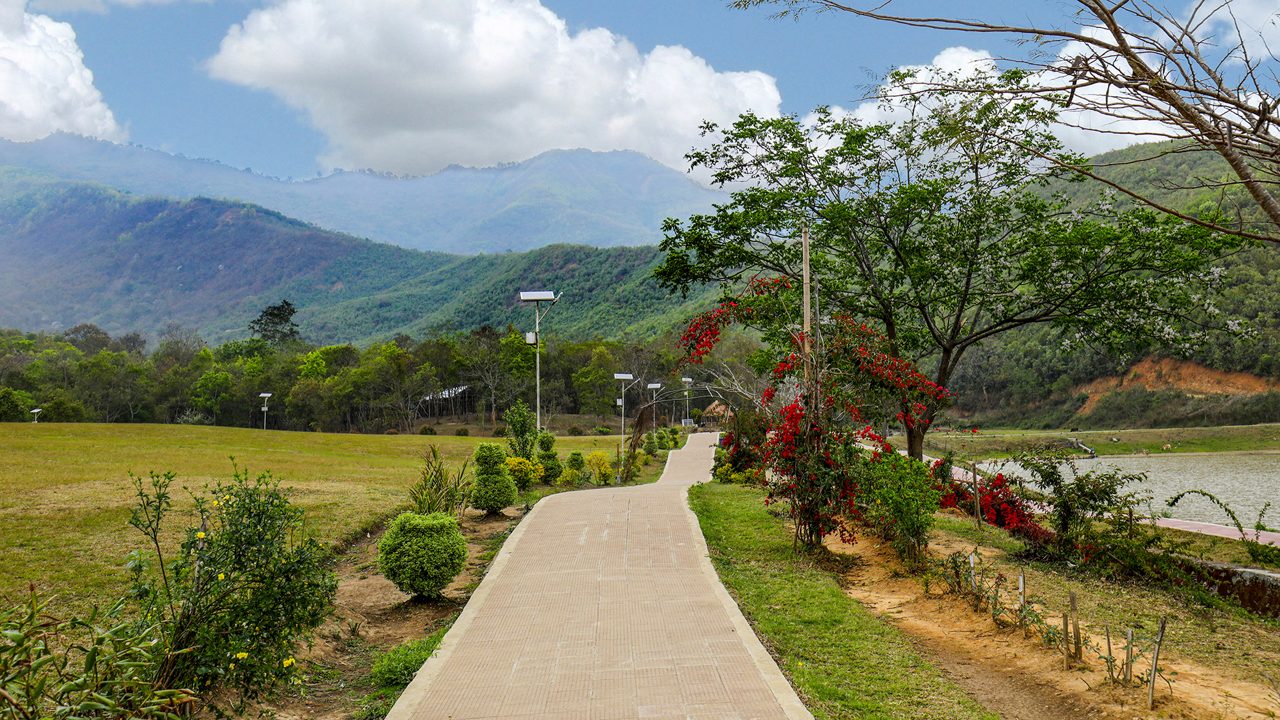
Nestled in the tranquil town of Andro, Santhei Natural Park is a refreshing escape where nature unfolds in its gentlest form. Centered around a calm, emerald-green lake, the park is framed by lush trees and open grassy spaces that invite visitors to slow down and breathe in the crisp, fresh air. The water mirrors the sky and surrounding greenery, creating a soothing scene that feels far removed from the rush of everyday life. Whether it’s the soft hum of cicadas or the ripples made by fish just beneath the surface, every detail here adds to its peaceful charm.
The park is a favorite spot for picnics, leisurely strolls, and boat rides across the serene lake. Wooden walkways and shaded gazebos offer cozy vantage points to simply sit and watch the day go by. It’s also a paradise for photographers, with its picture-perfect reflections, seasonal blossoms, and the occasional flutter of birds gliding above the water. For families, the open lawns and calm environment make it an ideal place to spend unhurried afternoons together.
Beyond the natural beauty, Santhei Natural Park holds cultural significance, being located near Andro’s heritage village. A short walk from the park can lead you to traditional huts, pottery-making workshops, and glimpses of the region’s age-old customs. This blend of nature and culture makes every visit here feel wholesome and enriching. As the sun sets, the golden light on the lake transforms it into a shimmering pool of tranquility, leaving visitors with a lasting sense of calm.
Best time to visit: October to March

Hidden deep within the scenic hills of Ukhrul district, Khangkhui Cave is a natural wonder that blends mystery, beauty, and a touch of adventure. Formed from limestone over centuries, its vast chambers and intricate rock formations feel like stepping into another world. Sunlight filters in through narrow openings, casting soft glows on the textured walls and highlighting the cave’s natural artistry. As you step inside, the cool air and quiet echo create an atmosphere both thrilling and serene.
Exploring Khangkhui Cave is like walking through nature’s own cathedral. The main chamber is massive, with towering ceilings and natural columns that seem to hold up the earth itself. Smaller passages branch out, each leading to unique rock formations shaped by time and water. Local legends add to the cave’s allure, with stories passed down through generations about its role as a shelter and sacred space during ancient times. For the adventurous traveler, every turn within the cave promises something new to discover.
What makes a visit even more special is the surrounding landscape. The cave is perched amid rolling hills and lush greenery, offering scenic views before and after the underground exploration. Villagers nearby often greet visitors with warm smiles and tales of the cave’s history, making the trip as much about cultural connection as it is about natural wonder. Standing at the mouth of Khangkhui Cave, with the vast hills stretching beyond, it’s easy to see why this place captures the imagination of all who visit.
Best time to visit: November to March
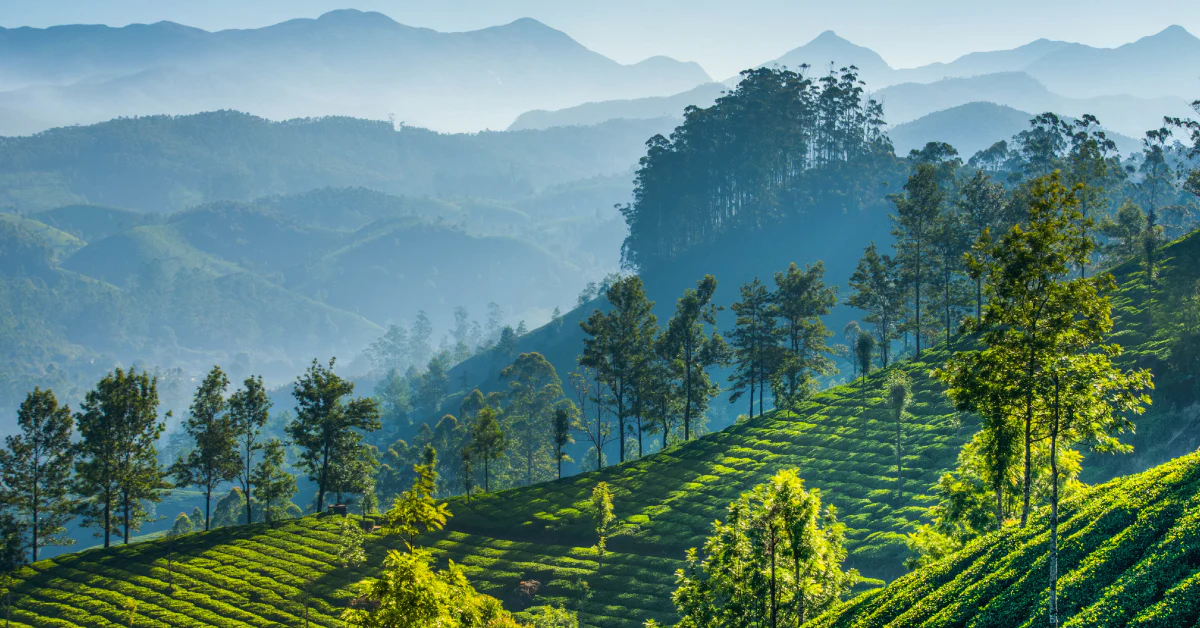
Tucked away in the serene landscapes of Jiribam, Nillai Tea Garden is a refreshing escape where rolling green hills are blanketed in perfectly trimmed rows of tea bushes. The air here is crisp and carries a faint, soothing aroma of fresh tea leaves, making every breath feel rejuvenating. As you walk along the narrow paths weaving through the plantations, you’re treated to sweeping views of green that seem to stretch endlessly under the open sky. The gentle rustle of leaves in the breeze and the distant chatter of workers in the fields add to the peaceful, unhurried rhythm of life here.
Visiting Nillai Tea Garden is as much about experience as it is about scenery. You can watch skilled tea pluckers at work, their hands moving with practiced grace as they gather tender leaves destined to become the perfect brew. Some parts of the garden offer small vantage points where you can sit, sip a freshly brewed cup of local tea, and soak in the view. For photographers, the play of sunlight over the endless green terraces creates stunning visuals throughout the day.
Beyond its beauty, the tea garden offers a glimpse into the heritage of tea cultivation in the region. The surrounding community thrives alongside the plantation, and engaging with locals often leads to warm conversations and insights into their way of life. As evening falls, the plantation glows under the soft golden light, turning it into a postcard-perfect scene. It’s a place where time slows down, and each moment feels steeped in calm—just like the tea grown here.
Best time to visit: October to March
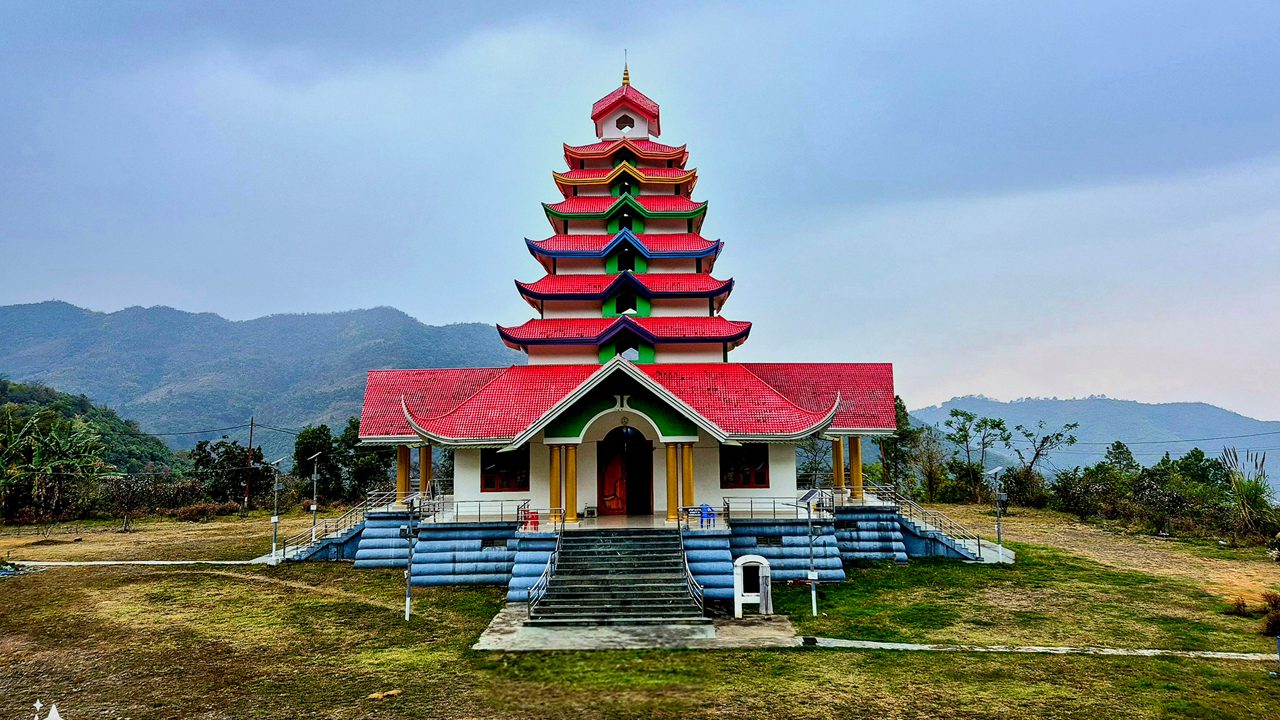
Perched gracefully on the slopes of Nongmaiching Hills, Sanamahi Kiyong Temple stands as a serene beacon of spirituality and tradition in Manipur. Painted in pristine white with elegant golden embellishments, the temple’s architecture blends simplicity with sacred grandeur. As you ascend towards it, the crisp hill air, the distant view of the Imphal Valley, and the sound of prayer bells create a sense of calm that seems to wash away the noise of everyday life. It is not just a place of worship, but a sanctuary for reflection and inner peace.
Dedicated to Lord Sanamahi, an important deity in Meitei religion, the temple holds deep cultural and spiritual significance. Devotees and visitors alike are drawn here for prayer, meditation, and the quiet comfort of its surroundings. The temple grounds are immaculately kept, with shaded pathways and small resting spots that invite you to linger. During certain festivals, the temple comes alive with vibrant decorations, rhythmic chanting, and the warm light of oil lamps, creating an atmosphere that feels both intimate and grand.
What makes Sanamahi Kiyong Temple truly captivating is the harmony it maintains with nature. Standing at its terrace, you can watch layers of green hills fade into the horizon, with clouds drifting lazily above. The blend of spiritual presence and natural beauty makes it an unforgettable stop for travelers seeking both cultural depth and scenic charm. Whether you arrive in quiet solitude or during a festive celebration, the temple offers a timeless sense of connection to Manipur’s spiritual heritage.
Best time to visit: October to March

Set against the backdrop of gentle hills and open skies, Khongjom War Memorial stands as a proud reminder of Manipur’s bravery and sacrifice. Built to honor the heroes of the Anglo-Manipur War of 1891, the memorial’s towering structure rises with quiet dignity, its design symbolizing resilience and valor. The landscaped gardens around it, with neatly paved walkways and flowering plants, create a peaceful setting that allows visitors to reflect on the history and spirit it represents.
Walking through the memorial grounds, you can almost sense the echoes of the past. The grand statue of Paona Brajabashi, the legendary warrior who fought with unflinching courage, serves as the focal point, inspiring both locals and travelers. Informational plaques and installations share the story of the battle, making it not just a place of remembrance but also of learning. The surrounding area, with its open views and serene environment, adds to the memorial’s solemn beauty.
Khongjom War Memorial is more than a historic site—it’s a symbol of Manipur’s unwavering pride and identity. Every year, it becomes the center of commemorative events where people gather to pay tribute, keeping the memory of the warriors alive for future generations. Standing here at sunset, when the sky turns shades of orange and gold, you can’t help but feel the weight of history blending with the beauty of the land.
Best time to visit: October to March
